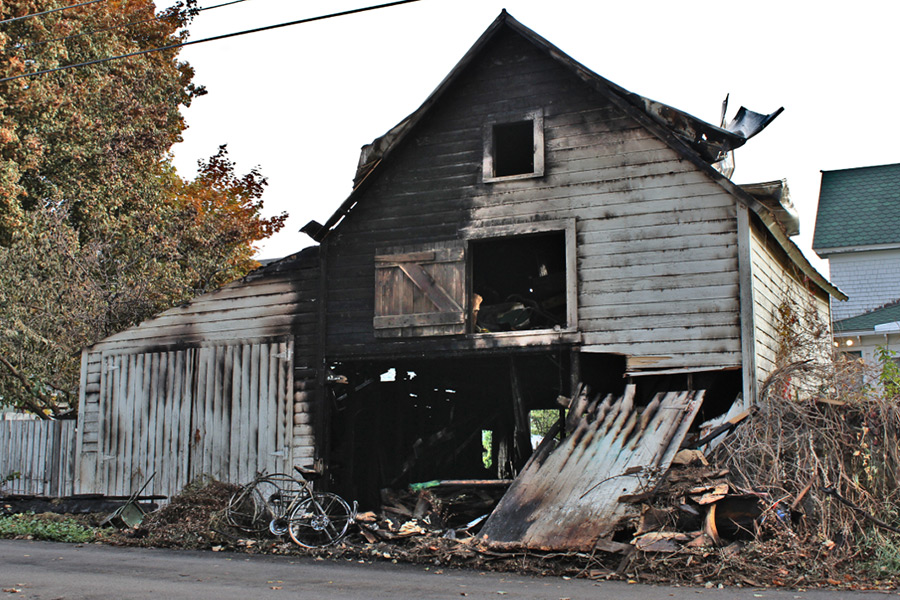Imagine a place rich in local history. A place of exemplary Queen-Anne styling with a well-outfitted carriage house – now imagine it’s gone.
On the afternoon of Oct. 13, the Kalispell Fire Department responded to a fire in the alley behind 540 Second Ave. W., the “Walker Residence,” as listed on the National Register of Historic Places.
The Kalispell Fire Department courageously doused the flames and defended the nearby houses and garages. However, neither the fire department nor anyone else could prevent another “landmark” of Kalispell’s “back-alley” architecture from disappearing.
Arson is presumed to be the cause of the fire (two teenagers have since been arrested for the alleged crime). While the crime is punishable, the history is irreplaceable.
The carriage house was built along with the adjacent Queen-Anne residence in 1903. Both were built for J.W. Walker by Cassius McCarty, a talented carpenter and contractor from Pennsylvania, by way of Iowa.
When completed, the house was heralded as “one of the handsomest dwelling houses in the city” by the Kalispell Bee newspaper. The carriage house (while modest compared with the more regal ones of the English countryside) served as an attractive appurtenance of this fine turn-of-the-century residence. For aside from establishing one’s home, one still had to negotiate the manner and means of travel – which at the time, was chiefly accomplished by horse and carriage.
The carriage house, like the Walker Residence, was originally a darker color. It had relatively plain, somehow Midwestern design sensibilities, but also mirrored the shape and form of the gables at the north and south of the house (compare them while you still can).
The carriage house also featured a modern convenience of its time: a center run, so that a carriage could enter from the drive and exit the alley or vice-versa. It also had a steep, narrow, and right-angled staircase that led up to the hay loft (hay and water were gasoline precursors, if you will).
The carriage house retained much of its original form and features, save for upgrades from the 1920s and 1940s that bear equally upon the nostalgic sense of the place – a place marked with a rich, every-day history.
It was here that J.W. Walker, an early auto enthusiast, was one of the first in Kalispell to park an automobile just outside a carriage house. It was an evolutionary moment: when the carriage was introduced to the car, and the carriage also met with fate.
The carriage house also marked the place where Walker’s daughter Phyllis began her early lessons in learning to drive an automobile. Phyllis is often regarded as the first child who learned to drive in Kalispell.
It’s also the place where boarders who rented rooms in the Walker Residence repaired their cars during the Great Depression and World War II. They likely made due and made repairs with whatever parts they could find or fashion – including those that were likely made inside the carriage house.
These are just a few of the more obvious aspects considering the history of the Walker Residence and the carriage house.
Unfortunately, whether by daunting neglect or nefarious deeds, carriage houses and other historic structures along the alleys the Flathead Valley are vanishing.
Jaix Chaix appreciates history and architecture. Share ideas and facts with him at [email protected] or at facebook.com/flatheadvalleylandmarks.
